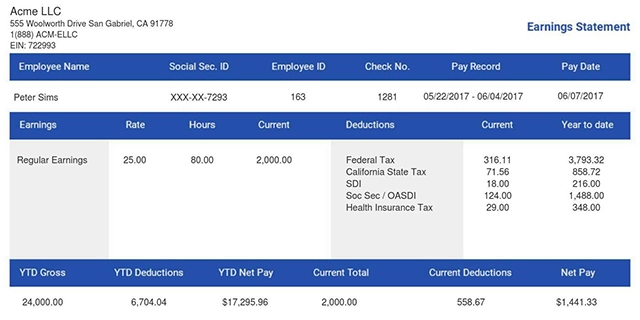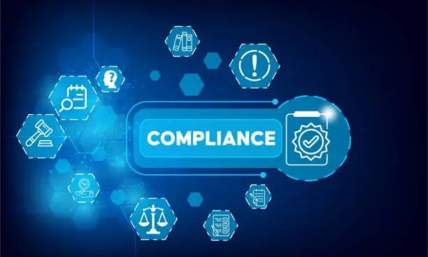The 5 Step Risk Management Process
Risk management is very important in business and the risk management process is a step by step guide for the actions that need to be taken to manage risks. If you’re looking for more information on risk management, as well as a breakdown of the 5 steps in the risk management process, you’ve come to the right place!
Also read: How To Calculate Take Home Pay Correctly

What Is Risk Management?
Risk management is an essential part of all businesses, whether they are small or large. Smaller businesses may manage their risks using more informal practices, while bigger businesses have a process which they follow to ensure all the risks are identified and addressed. All businesses want to feel stable as they grow and risk management is a great way of safeguarding their stability and minimizing losses.
If you are unaware of the financial risks or safety risks, this means that you can’t do anything to prevent them which may result in losses or accidents. This is why it is essential that you have a successful risk management process within your company.
Also read: Learning Programs For Startup Employees During Pandemic
Why Is Risk Management Important?
Risk management processes are extremely important for all companies and organizations. The process, if it is properly understood and carried out, doesn't have to be as scary as it sounds and it will become much easier to understand and follow over time.
While an organization will find it difficult to avoid all risks entirely, it is possible to perceive risks before they happen and attempt to avoid or minimize them and the damage they can cause to your business.
Also read: 8 Great Virtual Retirement Party Ideas
5 Step Risk Management Process
The 5 step process will really help you to understand important factors in the process, ensuring you don’t miss any of the important ones out.
Also read: 7 Thoughtful Farewell Gifts for Coworkers

-
Identify The Risks
The first step to the risk management process is to identify any possible risks that could occur. Anything that could potentially go wrong has to have been considered. This is the most important step in the process because if anything is missed here, then it won’t be acknowledged throughout the process.
There are four categories where there are risks which should be considered.
-
Hazard risks - injuries, fires etc
-
Operational risks - problems with suppliers
-
Financial risks - economic problems
-
Strategic risks - competitors, branding
Every company should assess all of these risks at length. In order to identify as many risks as possible, past experience should be looked at, as well as other similar industries.
You should also never assess these risks just once. Ensure you are revisiting the topic over and over again as the risks can change.
-
Identify The Extent Of The Risk
This stage is about considering whether the risk is likely to happen, and, if it did happen, assessing the extent to which this could be a problem. The risks that you identify as the most likely or most significant risks are the ones that you should be aware might cost you more money or time in the future. Having a knowledge and understanding of this will help you to prioritize where you should put your time, money and resources.
At this stage, many businesses enlist the help of a heat map which displays the frequency and severity of the risks. This will show you which risks are more likely or less likely, and which risks would have a large or small impact.
-
Figure Out The Solutions
In this stage, you look at the best ways you can prevent or treat the risk. In many cases, there is a strong opportunity to avoid a risk or at least control it. You have a few options. You could accept the risk which means you are accepting that the risk is there and that the benefits outweigh the risk. You can try to avoid the risk altogether by not doing the activity that poses that risk in the first place. You can also reduce the likelihood that the risk will occur or reduce the effect that the risk will have if it does occur - this is called risk control.
-
Choose A Solution
Now that you have identified the different options for solutions that you have, the next step is to pick one! Choose a solution and find all the resources you need to carry out the solution. This may be in the form of physical resources, or in the form of funding. You will also have to get the plan approved by those in your organization who would usually approve it. From here you would have to assess the situation over and over to ensure that the solution is being carried out effectively and that it is working.
-
Keep Reassessing
This leads me onto the final step in the risk management process. Continue to assess and reassess the situation over and over again to make sure that you have identified all risk and identified and chosen the best solutions. Risk management is not something that can be completed, it really needs to be revisited because the risks are constantly evolving and changing. You may also need to deliver further training to employees if you feel like the results are not being met because the strategies are not being carried out efficiently.
Evaluate The Success Of Your Risk Management
It is important to revisit the topic of risk management over and over again to ensure that you, as a company, are not missing anything. At the same time as this, you should ensure that you evaluate whether the way you carry out the risk management process is actually working for you. As you evaluate more risks, you will be able to identify where there are gaps in your risk management skills, which will allow you to streamline your process. Adapting like this in a business is essential for your success and is the only way you will be able to keep your business on track with all the others out there.
Also read: 10 Best Work-Life Balance Jobs in the USA

Final Thoughts
Now that you have a great step by step guide into a successful risk management process, you have everything you need to safeguard your company from risks!
If you haven't got the most efficient way to produce pay stubs for your employees, check out the pay stub maker today. So easy and convenient!















